Last week I posted photos of an old and incredibly traditional Tokyo street. A tightly packed little road lined with small wooden houses — the type of scenery and accommodation that must have once dominated the rapidly expanding capital.
That post-war growth, accelerated further by an increasing number of young, middle class families looking to move into the suburbs, created a housing crisis that resulted in the mass construction of concrete tower blocks of varying heights and sizes. The initial design and all-important efficiency of which was at least partly influenced by Soviet Khrushchyovka. Known as danchi, these government projects primarily offered affordable, but at the same time modern and well-equipped apartments.
The rush to build, and the similar rush of people wanting to move into these state-of-the-art concrete estates eventually peaked in the early 1970s, when the authorities officially determined that the housing crisis was over. A decision that, planned or otherwise, resulted in the slow, perhaps inevitable decline of the once fabled danchi, both in regards reputation and actual real estate.
These days, a lot of those early structures have already been demolished, with many more set to follow, yet a huge number of buildings still remain, and having initially moved in with their young, or soon to be young families, a considerable number of those early residents have stayed on. Nowadays, however, they are old, often alone, and their surroundings are far from ideal when it comes to the needs of the elderly. Isolation due to limited mobility and a dwindling network is an obvious problem, and along with other hardships, it has given rise to the terribly sad phenomena of kodokushi, or lonely, unnoticed deaths.
How many of these structures will survive in the coming decades is hard to say, but while many of them are incredibly utilitarian in design, the odd one or two, like the behemoth below which I first photographed a few years ago, are striking in both their looks and scale. A once futuristic vision from the past that’s now stuck in a perhaps understandably indifferent present.
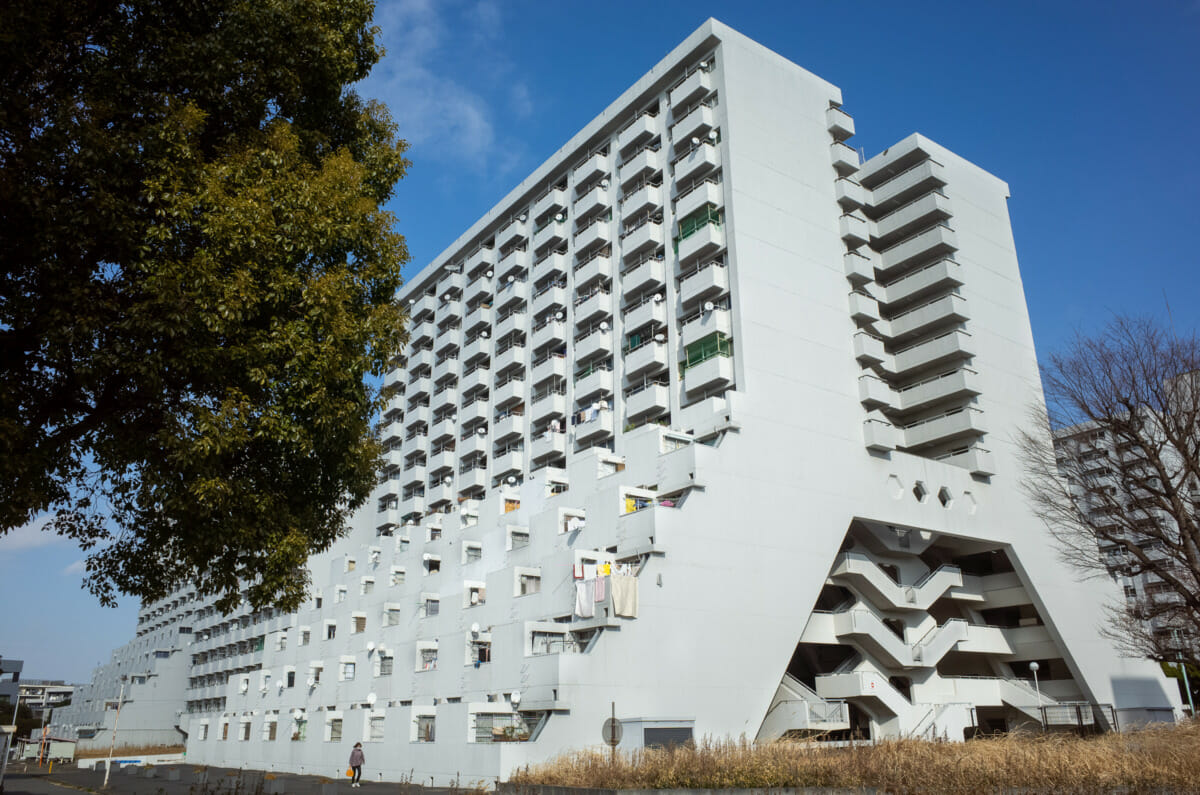
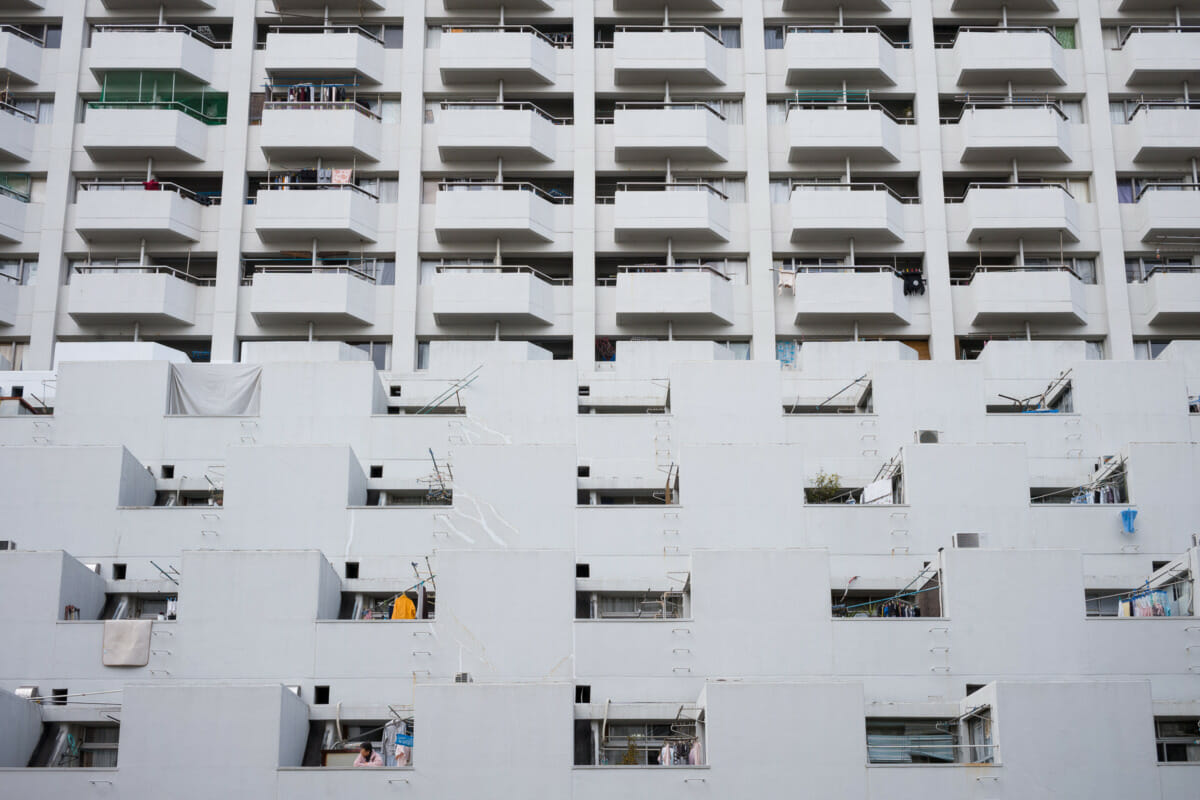
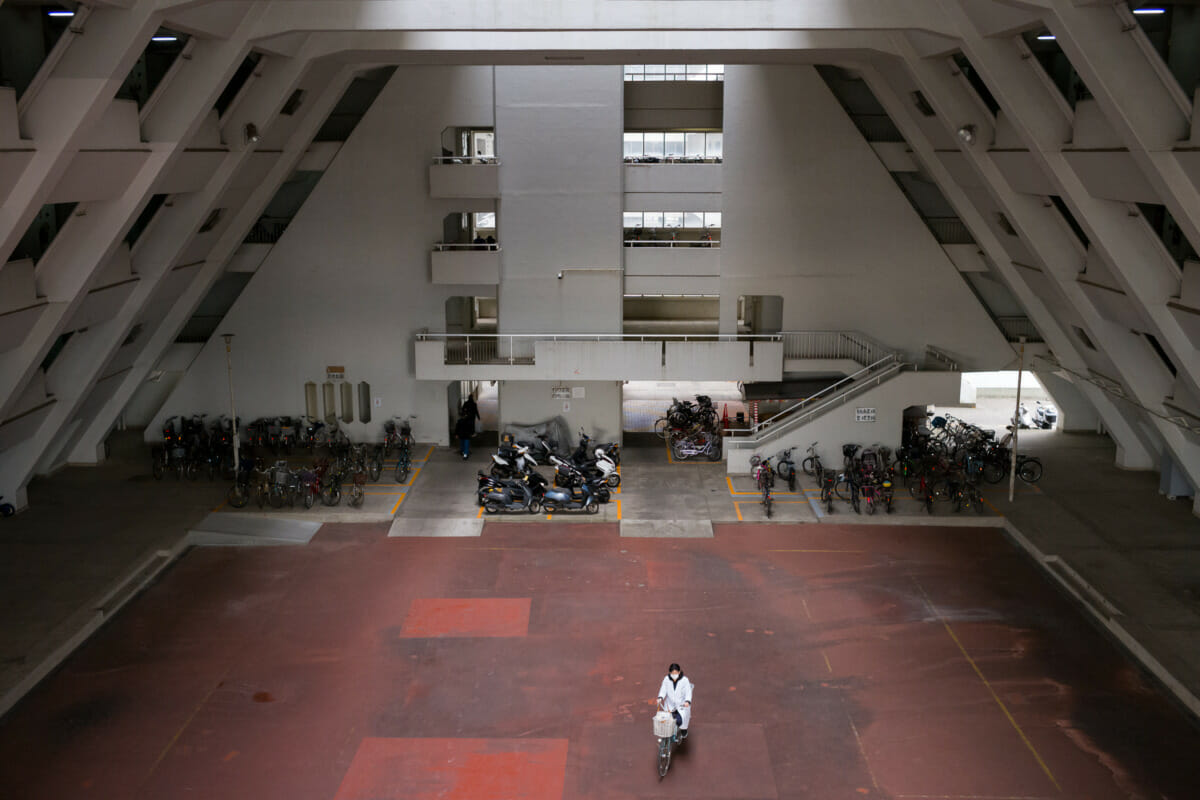
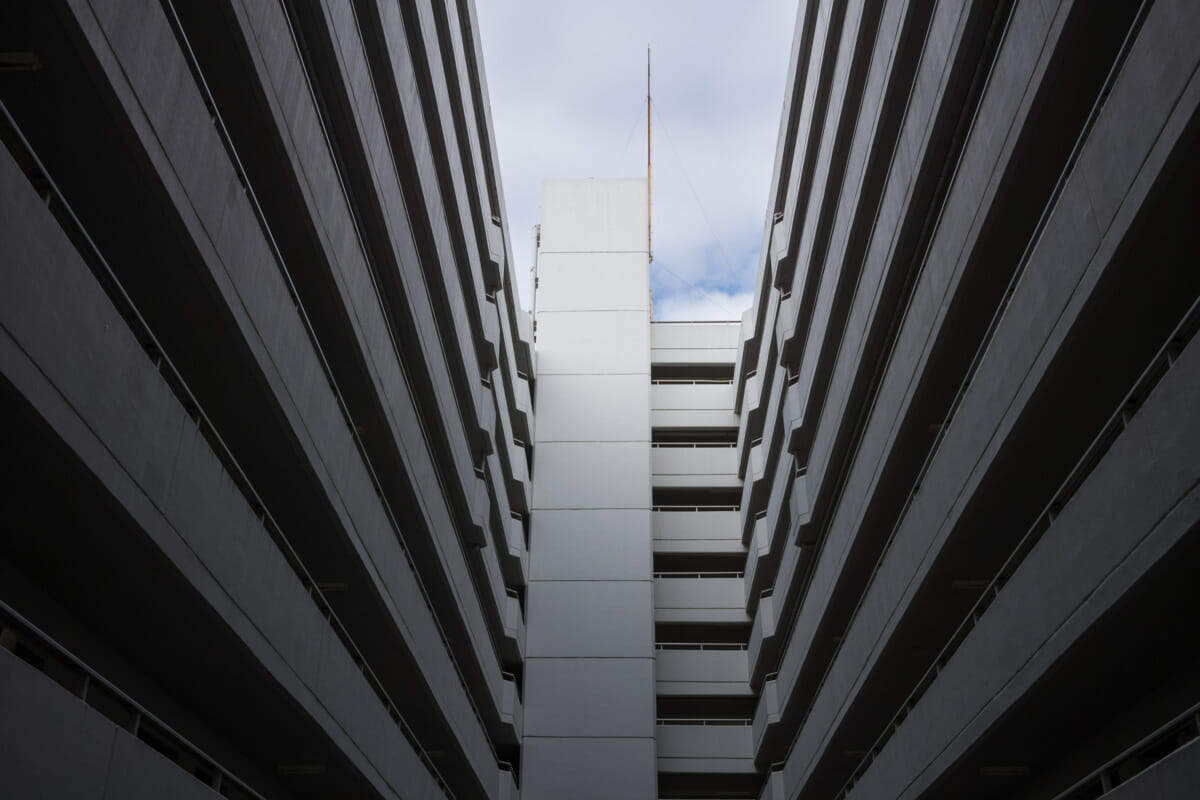
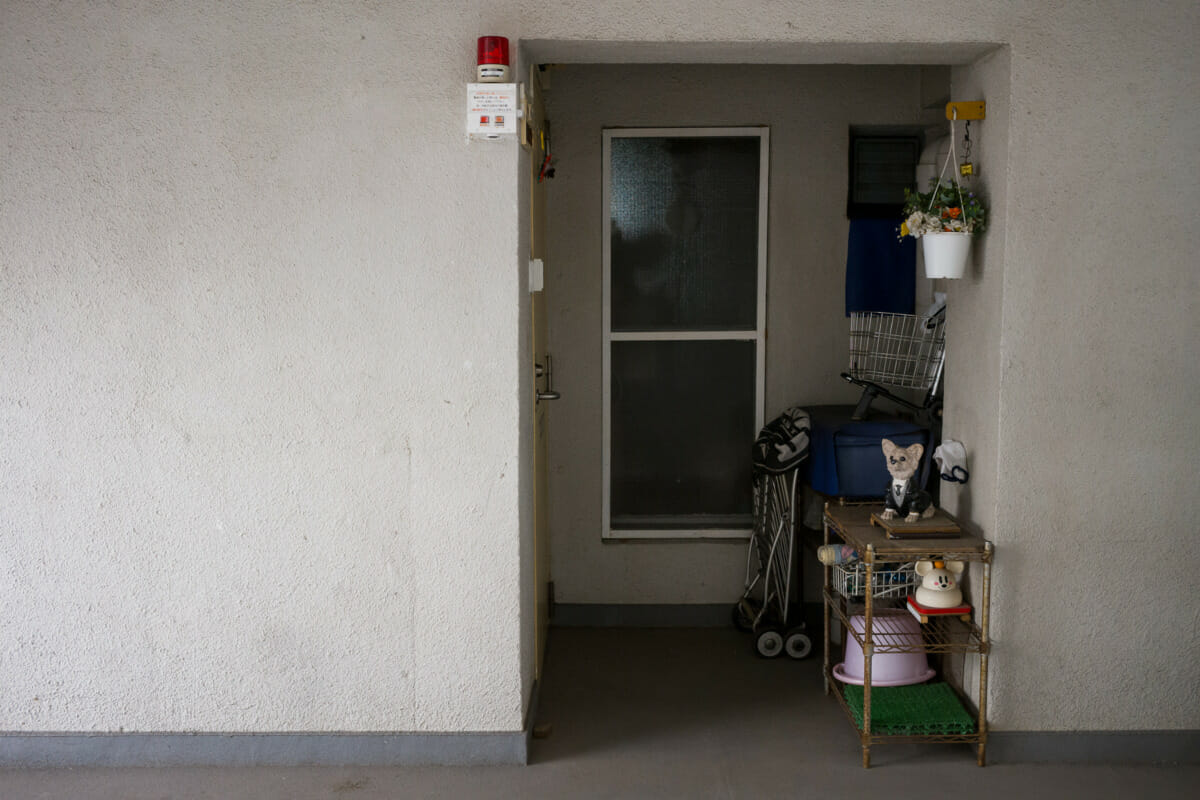
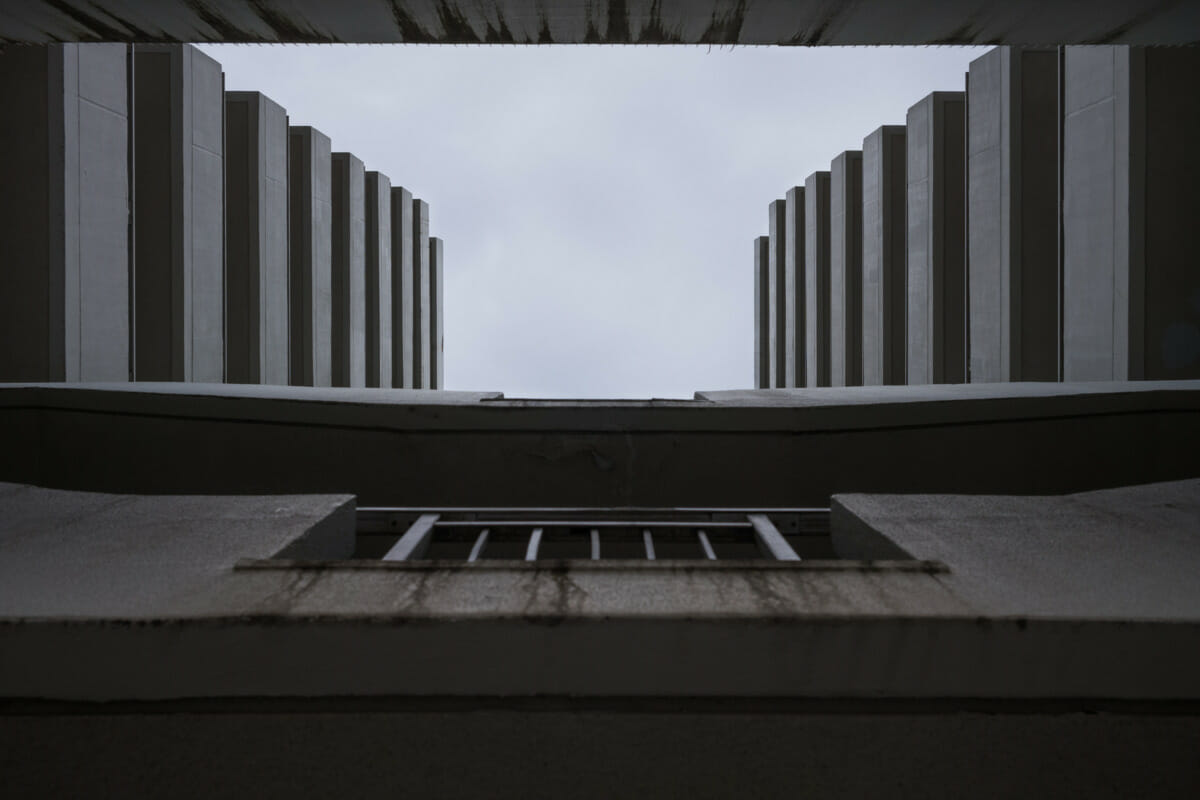
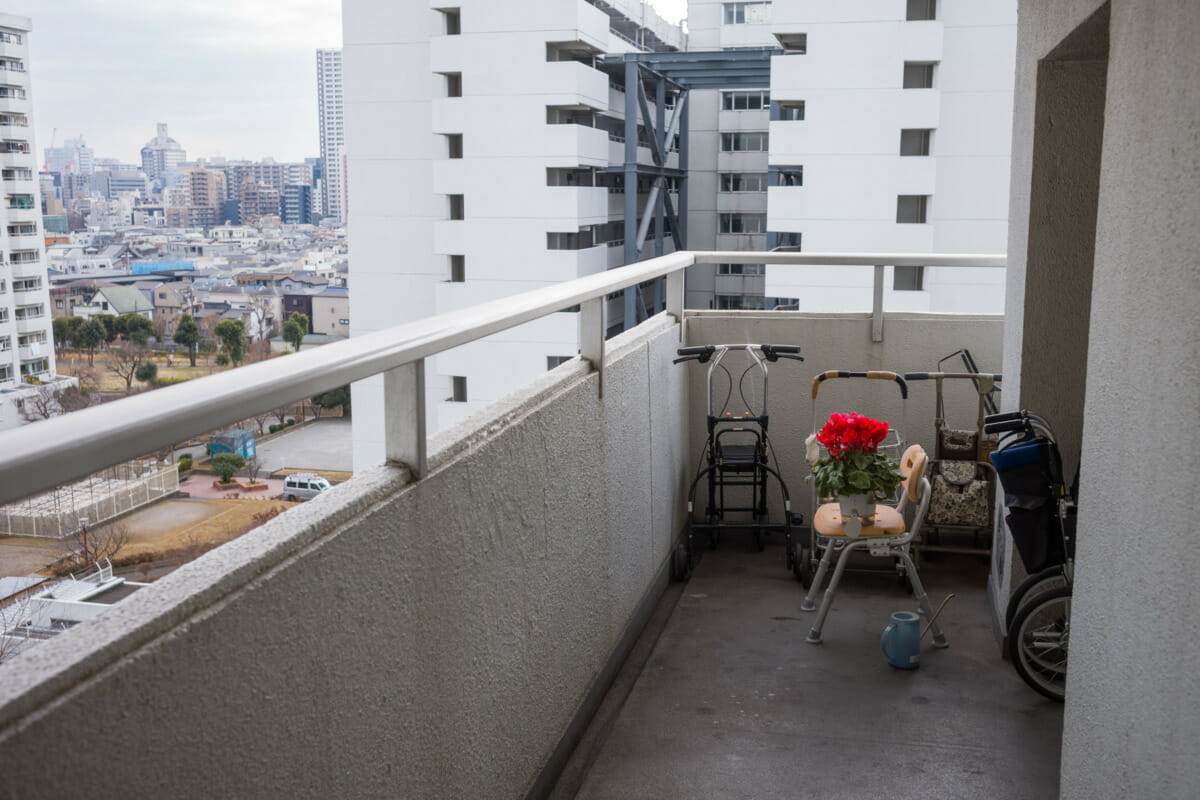

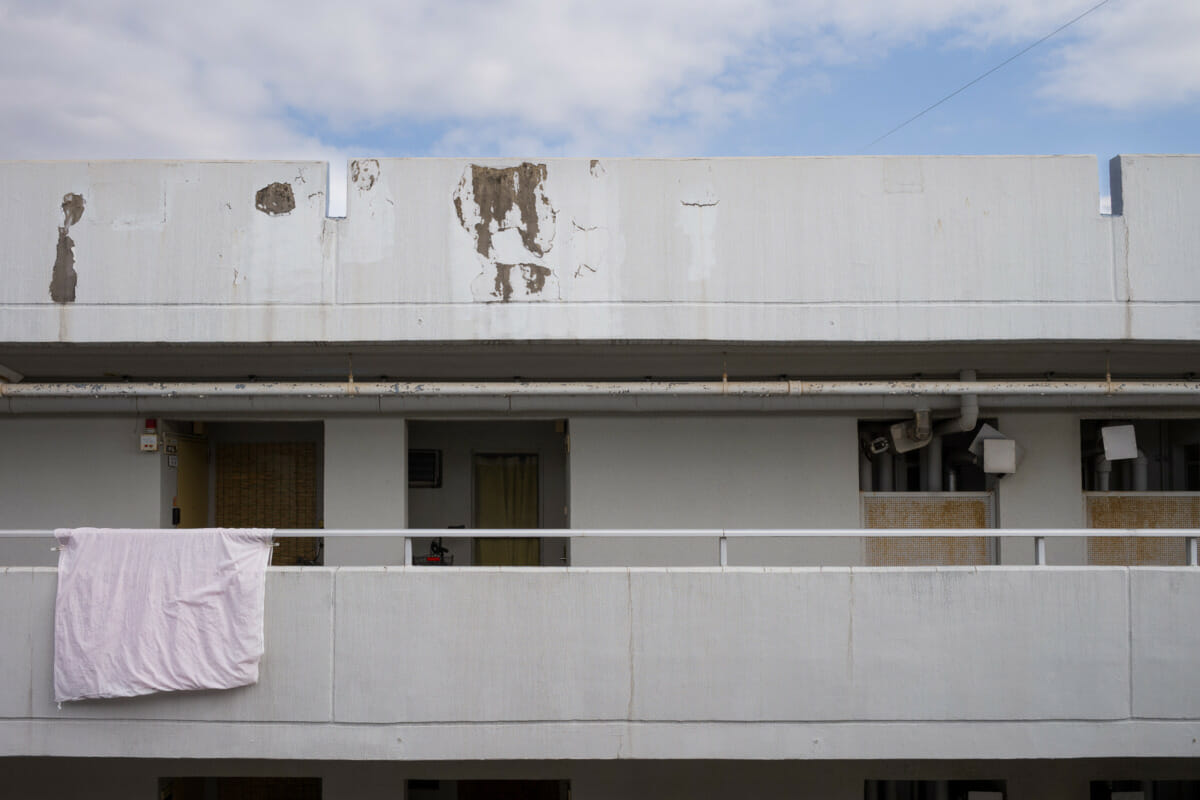

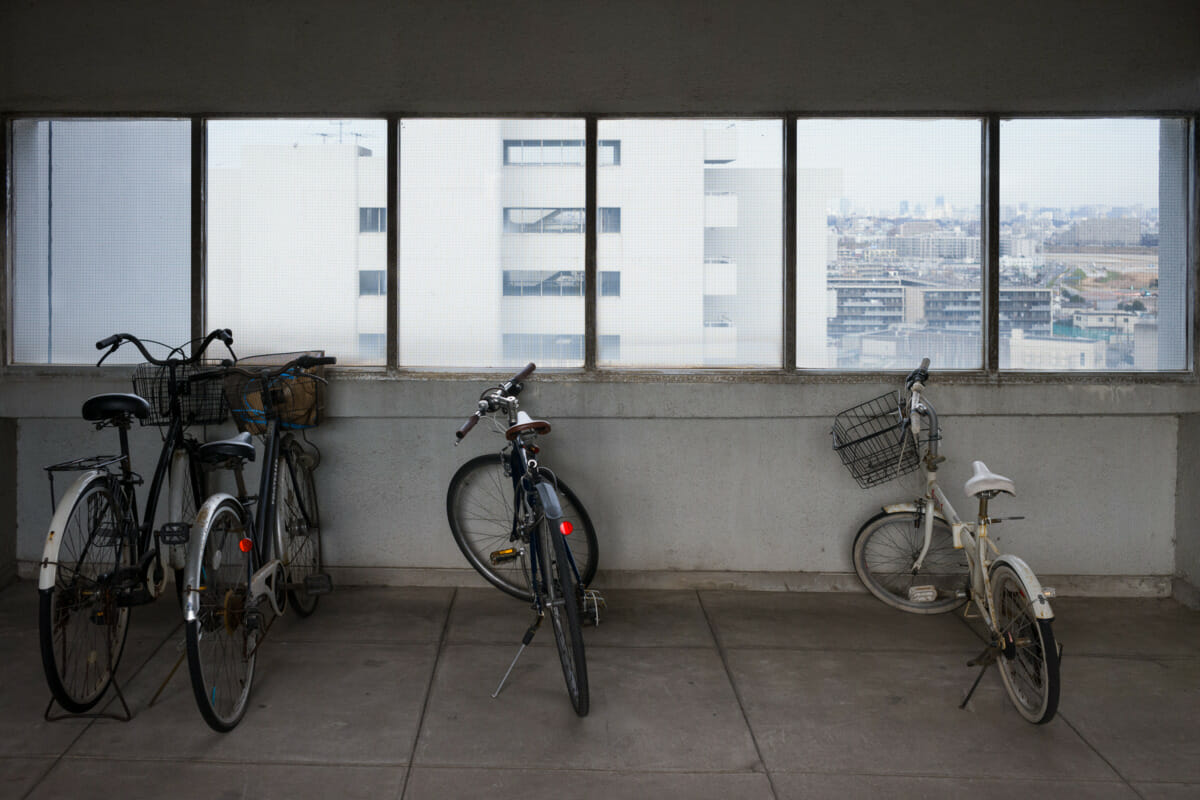
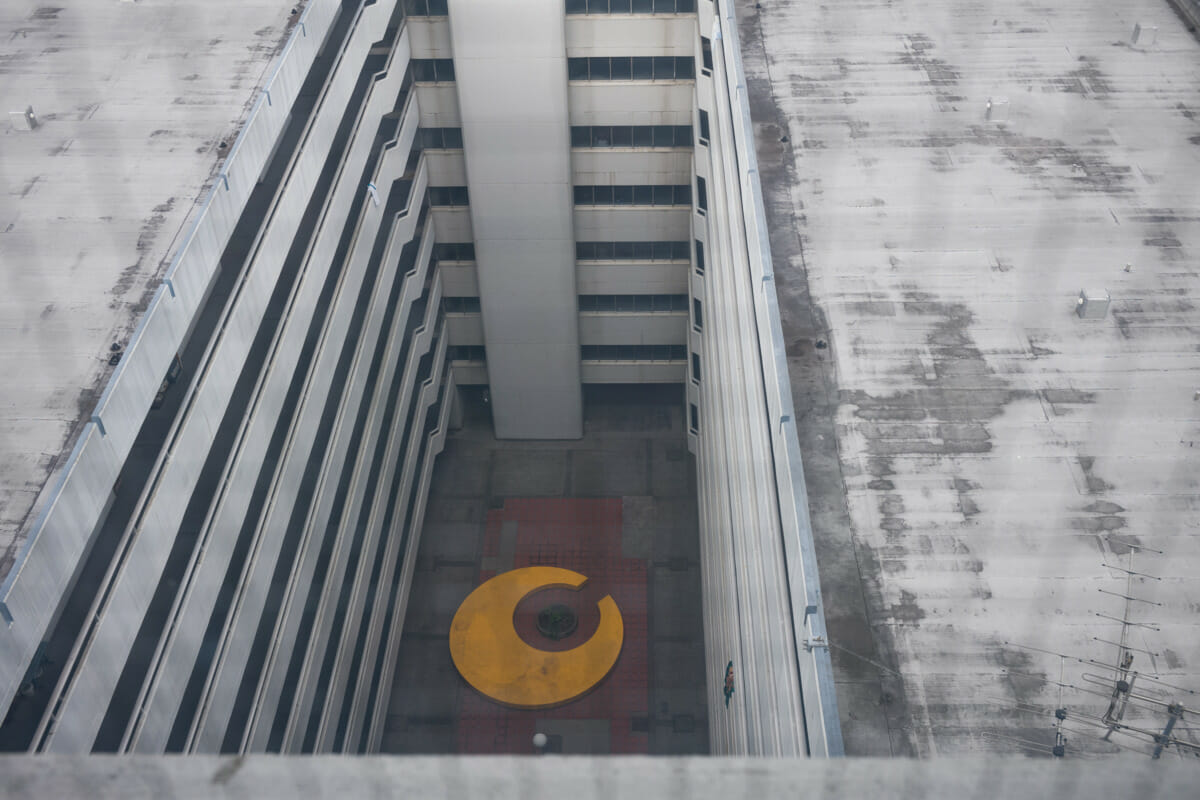
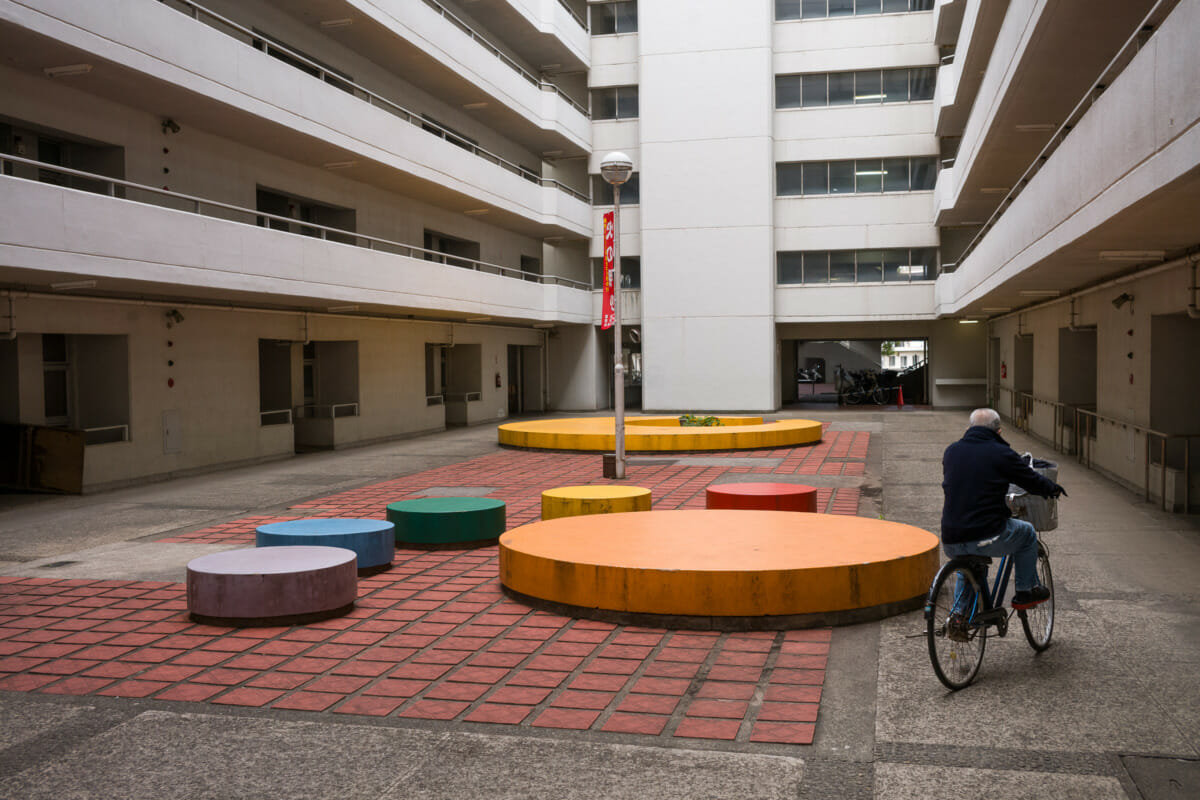
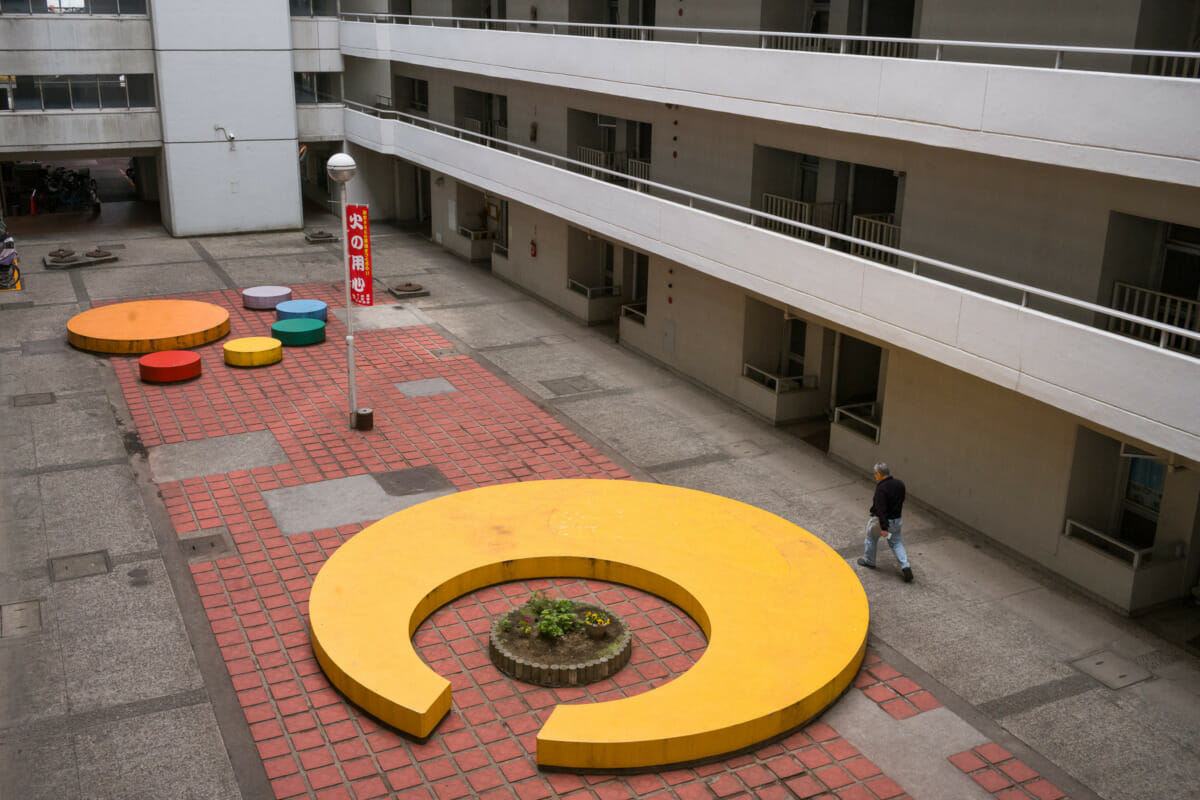

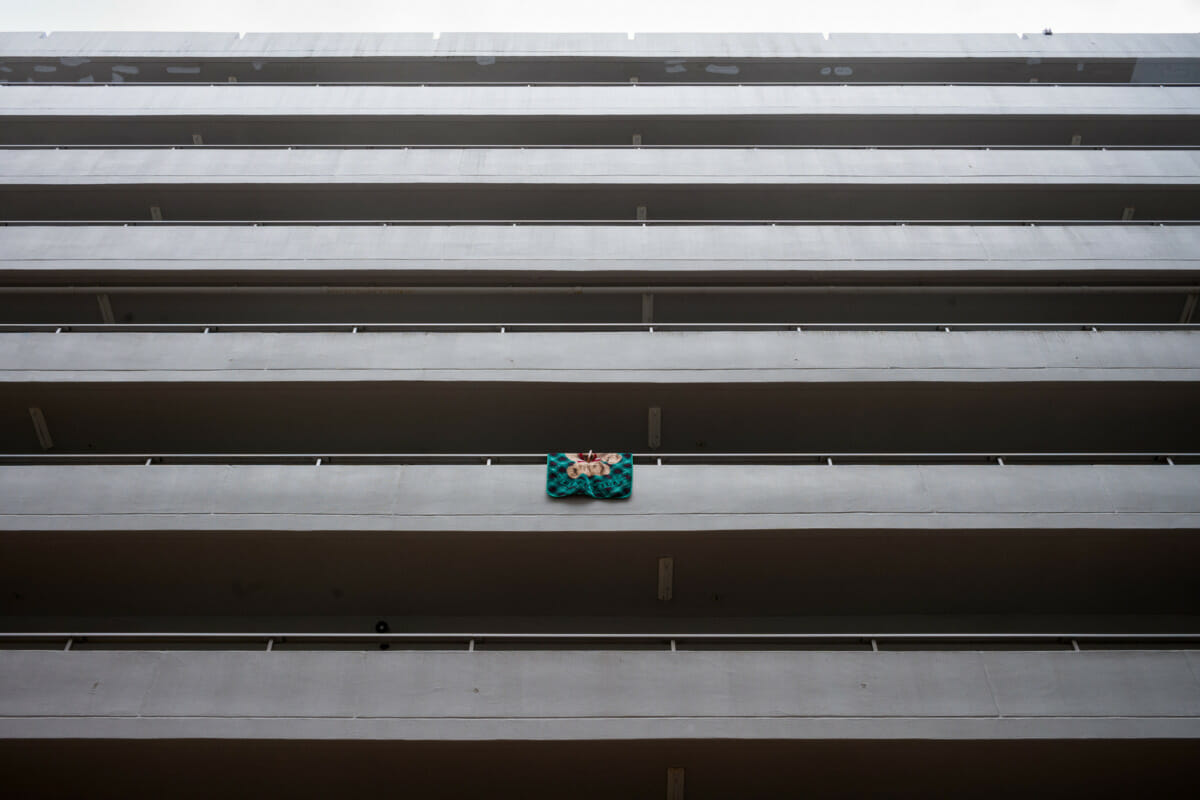
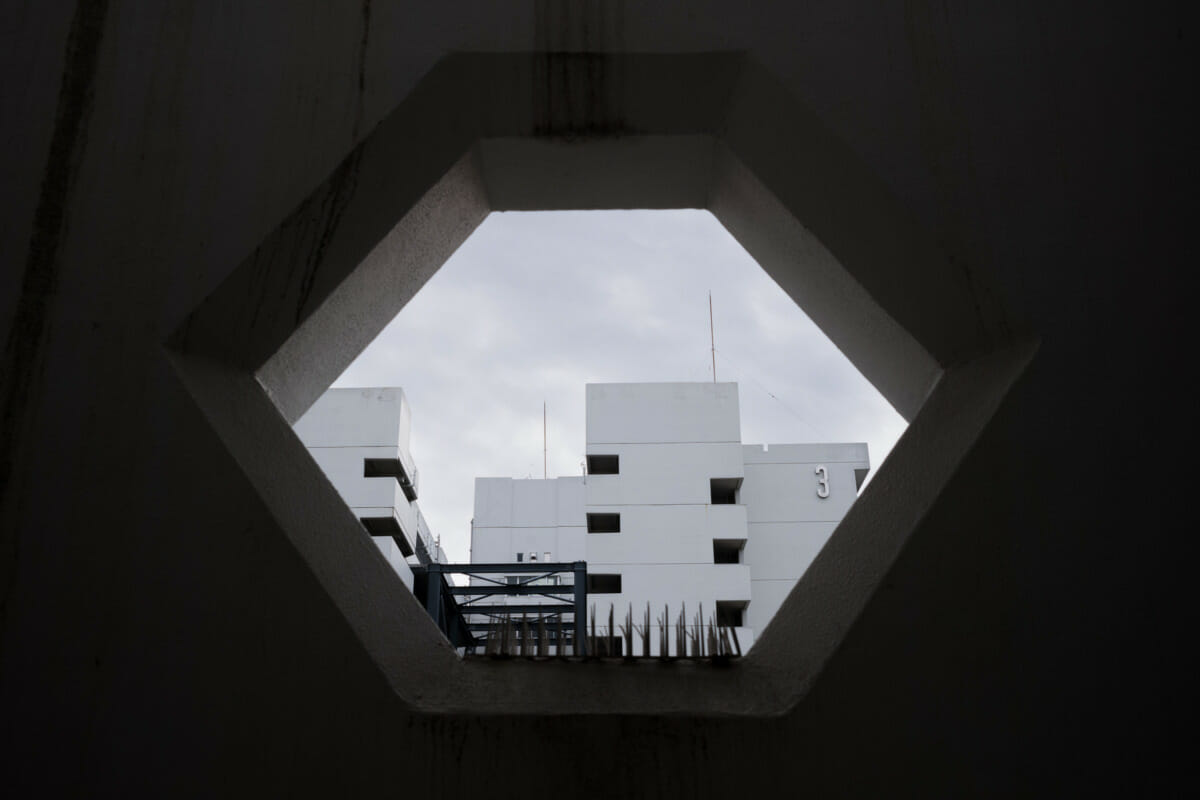
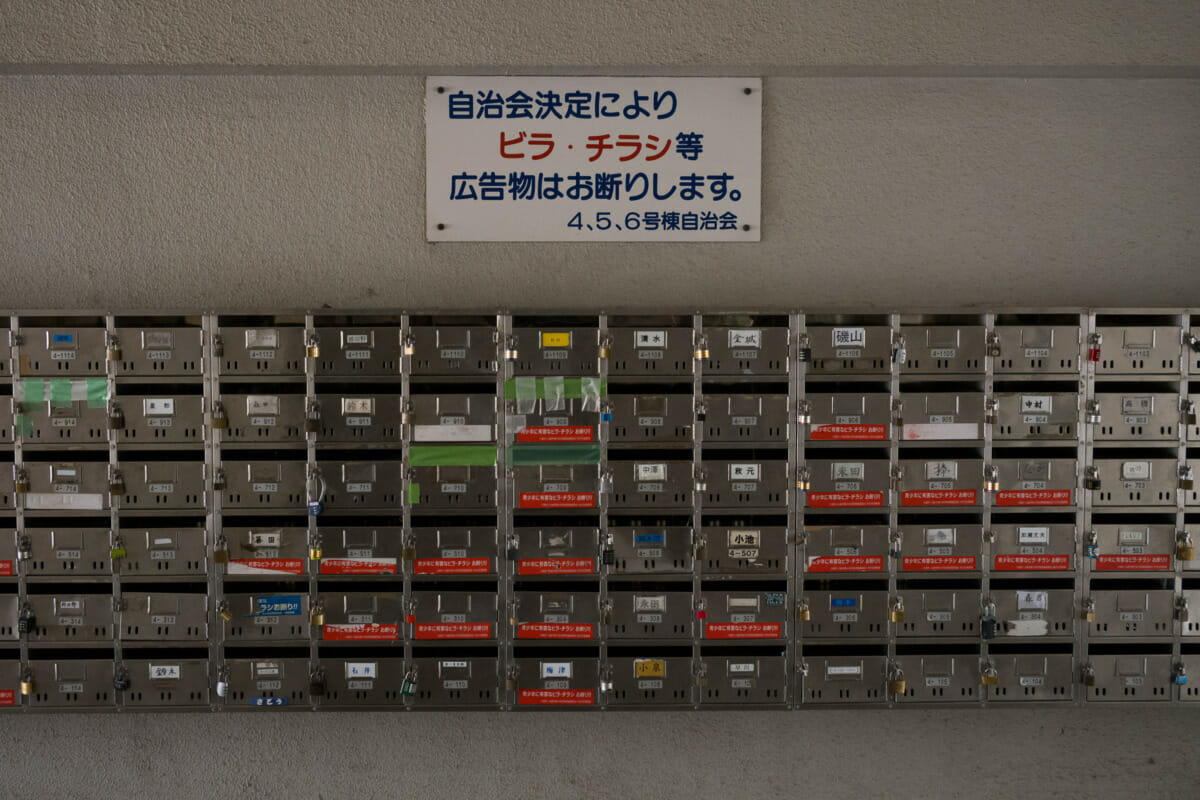
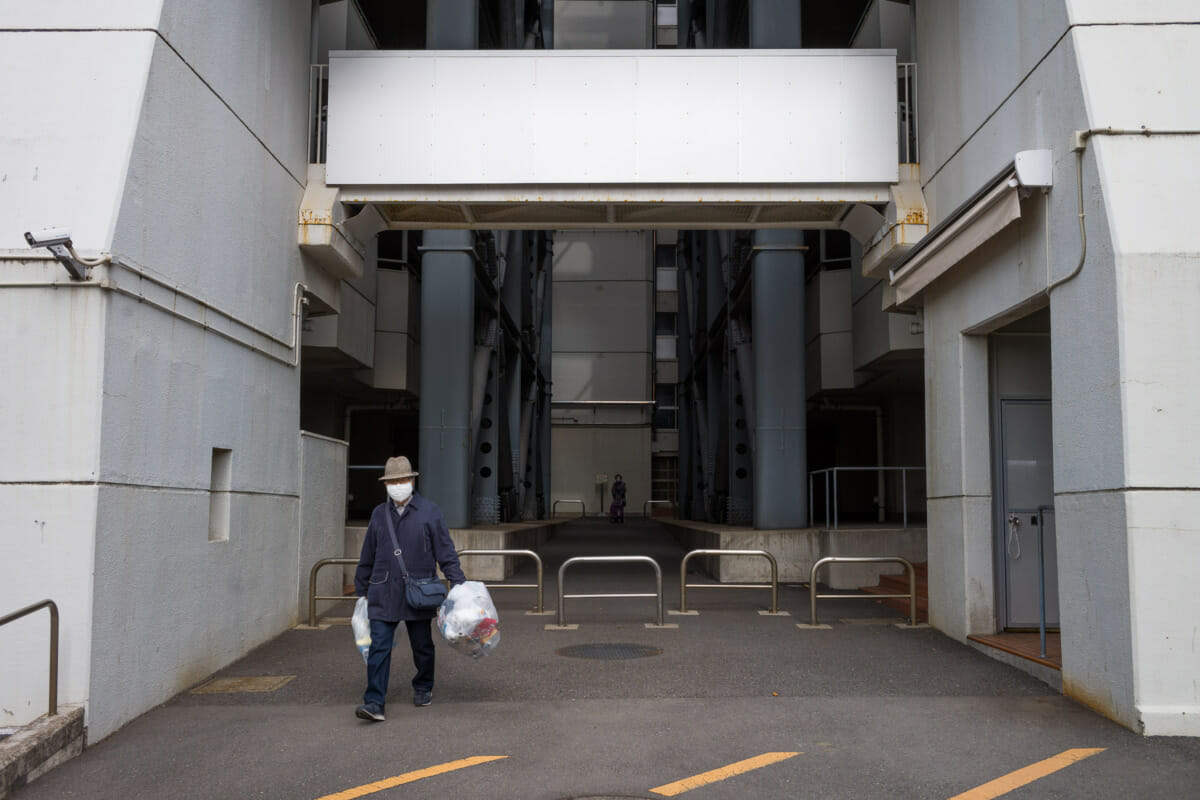
Günter says
It’s old but all still very clean.
Lee says
Yes, it really is. Definitely starting to show it’s age, but still very well looked after, both by the residents and the local authorities.
john says
It looks as if the architect was inspired by seeing Marineville in Stingray.
I like the included ‘incidental models’ in these images, and also the pot plant and porcelain pooch as featured in the last set (but in greater numbers).
Lee says
Yes, that’s very true. This was built in 1972, so definitely a possibility.
Thanks a lot. Glad those elements were worthwhile. Something I planned to include when I went. The building is impressive on its own, but without the addition of people (or at least hints of them), it would seem incredibly cold.
cdilla says
That is an amazing set of photographs. A nice distraction from receiving notification our flights have been cancelled and moved for the third time.
The clarity and crispness of them shows just how clean and tidy the place is. The guy carrying out the trash and the shiny mailboxes show the residents pride. Can you imagine what a similar place in London looks like.
I like the way the buildings are aligned exactly north-south letting the sun fall on the central common areas despite the high buildings either side. Having the river just a short walk away must be nice too.
It’s a huge complex but with virtually no coverage from street view.
One thing I have recently noticed is how different areas of Tokyo have different designs for the roadside pedestrian barriers/fences. Here they have a nice bird and fish motif between wavy lines – presumably a reference to the river.
Lee says
Thanks a lot. Yeah, like I mentioned in the comment above, it’s definitely showing its age, but both the residents and the local authorities have made sure it’s still in good condition. Clearly well planned as well like you said, although the echoes round the building are surprisingly loud. Can’t imagine what it must have been like when it was full of young familes…
Thinking about it now, there’s no access for cars I think, so if correct, that would explain the lack of street view.
Ah, not unexpected but no less disappointing I imagine. There are though growing noises about opening up the border and getting rid of the strict ,but increasingly pointless, hotel quarantine, so we are going in the right direction at last. The booster roll out is now in full flow too. Just had mine this morning. Fingers crossed then that it’ll all mean 3rd date lucky.
Richard says
I have seen many of these complexes over the course of the 50 years of my living in and travels to Japan. But never one designed like the one in these photos. What an interesting attempt to make a more ‘modern’ structure! The lobby/gathering room is particularly striking. As you noted in one of the comments above the noise/echo factor must have been profound. NOT somewhere I would want to live.
Thanks for sharing these! I hope you have been well in the midst of the Omicron surge there. Here in the USA the case numbers are declining and many states and cities are rushing to eliminate the mask mandates, etc. I think they fear a revolt as is happening in Ottawa and other cities around the world. What will they do if/when another variant arises?!?
Lee says
Yeah, likewise. This really does seem to be a one-off. I’m the same. It looks incredible, and walking round and photographing it is fascinating, but not at all sure I’d like to live there.
You are welcome as always. We thankfully do seem to be past the peak here, and the booster roller is in full force. A bit late, although to be fair we were late getting the first lot of vaccines. I had my booster yesterday, and that was 6 1/2 months after my 2nd shot.
I know eh? They aren’t ideal I know, but wearing a mask for protection isn’t exactly the biggest hardship in the world. That said, I fear it will be the complete opposite here, and always wearing one will be the new normal. That’s fine for trains and super busy places. Makes sense in so many ways. I’ve not had a cold for years now. But wearing them outside as well I could do without as the danger begins to fade.
Richard says
Given our age and my wife’s underlying health risks we will continue to wear masks indoors after these mandates have been lifted. Also very reluctant to eat inside a restaurant, to attend a concert/live theater, to go to see a movie, and to ride on public transportation. I will wear a mask when outdoors in situations with people in close proximity. I will not wear a mask in outdoor situations where there are few people around such as a park. Those kinds of situations may be rare in japan where there are almost always lots of people in fairly close proximity.
It has been 6 months since we got our third/booster vaccination The data on getting a fourth vaccination is mixed right now. We are still waiting to see if it might be a good idea.
Stay safe and well!
Marc says
I’m surprised by the low level of maintenance. It looks like some stuff just needs a scrubbing.
Lee says
For a building on such a scale, that would involve an awful lot of scrubbing…
David says
That danchi once had much more grass and green spaces. Most of it was paved-over by city planners later. The area also lost much of its manufacturing industry, and became a post-industrial wasteland until a lot of the industria-chemical-contaminated areas along the Tama river especially suddenly became high-rise condos. Buyer beware.
Lee says
Cheers for the extra info. Had no idea about. Must admit I did notice the lack of playgrounds etc. that such danchi so often have.
I didn’t know about the loss of manufacturing and contaminated areas either. Thanks. The perfect prompt for a bit more research.
LAObserver says
The building design may be more practical than just “incredibly utilitarian in design”. Nippon has more than its share of high magnitude earthquakes. The trapezoidal base on this building is in fact the very design that makes for a very strong, resilient structure when the Earth is moving much more than we would like. This was demonstrated in California in January 1994 when the Northridge earthquake set the ground moving in ways no one enjoyed. (This author can confirm the accuracy of this statement). The structures with a similar tapered trapezoidal base design survived with little to no damage, while so many others collapsed and failed.
Lee says
That’s a very good call. With all modern (or at least modern-ish) buildings being built to the required safety standards, I didn’t even think about that aspect. But after reading what you wrote, it makes total sense. Means there has been minimal need for expensive and ugly retrofitting as well. Had no idea about such structures surviving the quake in California either. Very interesting.
Once an Expat says
Der Fuhrer bunker school of architecture is what I see.
Lee says
I can definitely see what you mean. From certain angles there is a forebording element to it, especially so with all the other tower blocks nearby. Also, in a rather tenuous and fictional link, it’s nickname appears to be White Darth Vader.